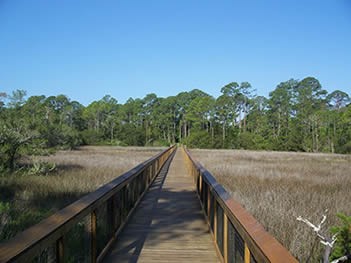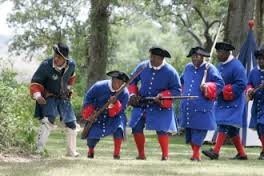Fort Mose Historic State Park
Introduction
Text-to-speech Audio
Images
The land where the fort once stood is now part of the Fort Mose Historic State Park.

The Fight for Freedom event is held at the historic park each February.

Backstory and Context
Text-to-speech Audio
In 1738, slaves who ran away to St. Augustine found safety there. They were considered free as long as they agreed to three conditions: if they converted to Catholicism, swore allegiance to the King, and, for the men, joined the Spanish militia. As stated above, slavery did exist in Spain, but slaves had the to right to own property, sue in courts, keep their families together, and buy their freedom.
The British, on June 26, 1740, marched down to Fort Mose, to fight the Spanish. With the leadership of Franciso Menendez, a Mandingo from West Africa, constructed a log fortress to defend themselves from a British invasion. The Spanish and Black militia left the fort, and the British took cover there. They conducted a surprise attack on the British and recaptured the fort, killing 68 British soldiers and taking 34 prisoners. Those who escaped fled back to Georgia. The war between Spain and Britain was known as the “Battle of Bloody Mose.”
The original Fort Mose was destroyed in the battle by British general Oglethorpe. It wasn’t until 1752 that the second fort was built a quarter of a mile from the original. Since the fort was destroyed, African settlers had to live inside St. Augustine until the second one was built. Records show that there were possibly 22 huts at the second fort made from thatch. There were also houses made of poles with palm leaves as roofs. In 1763, Florida was given back to the British at the end of the French and Indian War. Fort Mose ended up being evacuated, and the Spanish people and free slaves migrated to the northwest coast of Cuba.
Sources
"Fort Mose Site Florida." National Park Service: American Latino Heritage. Accessed December 1, 2014. http://www.nps.gov/nr/travel/american_latino_heritage/fort_mose.html
